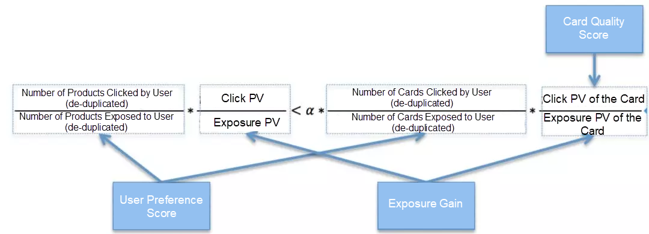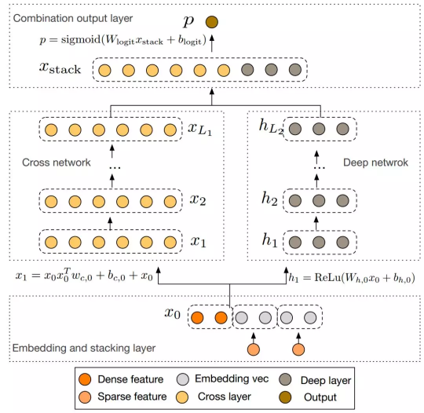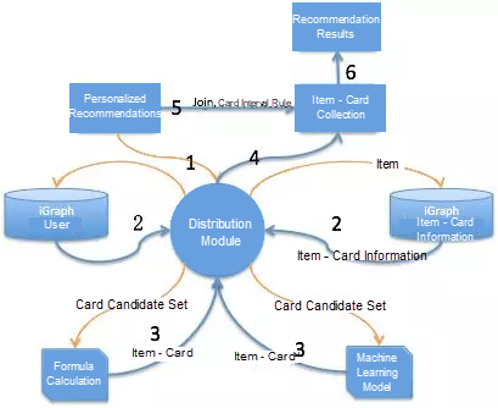The Alibaba Cloud 2021 Double 11 Cloud Services Sale is live now! For a limited time only you can turbocharge your cloud journey with core Alibaba Cloud products available from just $1, while you can win up to $1,111 in cash plus $1,111 in Alibaba Cloud credits in the Number Guessing Contest.
The Picks For You module on 1688.com is now much more than just a product recommendation channel. It has led to the development of some major online promotions and good marketing scenarios including Top-ranking Products, Must-buy List, Theme Marketplace, and Discover Quality Goods. Inserting marketing scenarios into the Picks For You display in the form of cards helps to distribute traffic and improve overall position exposure gain. This article illustrates how to insert marketing scenario cards into the Picks For You display.
Currently, the marketing scenarios inserted into Picks For You on the 1688.com app are mostly product collections. With metrics that are relevant to IPV as the current focus, consider exposure gain to measure model results. Calculate the exposure gain as follows:
Exposure gain = 
In the case of only product recommendations, this metric is equal to PV_CTR.

Figure 1 The Picks For You display on the homepage of 1688.com app
At present, sellers decide and provide the mapping between marketing scenario cards and the products to display in the Picks For You column.
How to insert certain marketing scenario cards into product recommendations?
It is very straightforward to randomly attach a card to recommended products with a certain probability. This method lowers exposure gain as it ignores the capacity of cards and user preference for different cards. While causing metric values to drop significantly, this method helps to accumulate initial data in a short time.
To transform a product into a card, define a card quality score and a user preference score, then use the formula shown in Figure 2 to determine which type of card to use.

Figure 2 Card selection formula
At the same time, instead of simply applying the product-card relationships provided by sellers, filter the provided collection of product-card pairs. There are multiple cards under each card type for every product, therefore filtering by card quality scores is critical. User preference scores for different card types are calculated offline. iGraph synchronizes these two types of data daily. In online scheduling, cards are inserted once they are attached to the corresponding products based on the formula shown in Figure 2. For better results, carefully arrange the display frequency of cards, ensuring that there is a certain number of products in between to avoid the situation wherein too many cards appear on one screen. The exposure gain grows by 3.23%, in comparison to the results before iteration. However, it is still lower than the base value without inserting any card. It is significant to note that there is a limited improvement even while experimenting with the multiple variations of the formula in Figure 2.
Now, with so many cards available to attach for a recommended product, the question arises that which one is most likely to draw clicks. The suggested model attempts to answer this question while transforming it into a Click-Through-Rate (CTR) estimation problem. Sort the estimated CTR values and pick the highest CTR. The final display results are subject to several rules.
From the Picks For You data, select the Exposure and Click data of recommended products that are available for attaching cards as training examples. Features categorize into three parts- user feature, (trigger) item feature, and card feature. Use the product form as a special card form. Select 85 features as the model input, including 62 real number features, 19 categorical features, and 4 cross features. Real number features are statistical features in the user, item, and card dimensions. For example, the statistics of CTR of a product (item) on the Picks For You platform, and CTR in different forms. For categorical features, make sure to embed the same before inserting them into the model.
Based on the final product recommendations of Picks For You, recall the candidate collection, item2item2card, from the selected product-card collection. Currently, the mapping between products and cards only uses the above-mentioned card quality score, but does not consider the relationship between products and cards. The overall capacity of a card is not necessarily equal to the capacity when it is attached to a certain item. Therefore, add an item2theme mapping, where the theme represents item-card. SWING algorithm helps to construct this method using Card Exposure and Click data of several days and considering an item-card pair as an item entity. Online A/B testing shows that after adding this recall, exposure gain increases by 0.79%.
Use the Wide & Deep Model (WDL) as the sorting model, despite using the Deep & Cross Network (DCN) during iterations. A/B testing shows little difference in exposure gain between the two models, with DCN 0.03% higher than WDL. Use XTensorFlow to train models every day and push to RTP.

Figure 3 WDL (left) and DCN (right)
The effectiveness is composed of two factors: card content and precise card distribution for product recommendation. If the card content is poor, it will further reduce users' interest in clicking the card again, and also affects upstream distribution. Compared to the weak personalization, the current strategy increases exposure gain by 6.77% and the number of products clicked per user by 18.60%. Secondly, against the product recommendation method, the current strategy boosts exposure gain by 1.58% and the number of products clicked per user by 0.01%.
The product recommendations from Picks For You determine the overall product sequence, whereas the card sorting model decides which cards are attached to which products and eventually where to display based on rules (the card interval strategy used in the weak personalization phase still applies). Figure 4 shows a flowchart of online scheduling, which includes the weak personalization and machine learning module.

Figure 4 Scheduling flow diagram, containing weak personalization and machine learning model
If certain card types are missing in the final result of a single request, then according to a pre-set probability, up to one card will be inserted for each missing card type. The interval policy also affects the fallback result. A card can't be inserted if there is no suitable position. This ensures card fallback and cold start; and increases the diversity of cards, allowing users to see other types of cards.
The current model is merely a card selector, which fails to consider the overall sequence of products and cards. Currently, the card selector only models the exposure and click data at the Picks For You level. Considering that we aim to take into account clicks inside cards, there is room for optimization. In the future, we plan to use the existing product recommendation results for recall and the card selector as another method for cards to train a mixed sorting model downstream for overall sorting.
How to Remove "Pseudo Exposure" from Mobile E-commerce Platforms

2,599 posts | 764 followers
FollowAlibaba Clouder - January 22, 2020
AlibabaCloud_Network - November 12, 2018
AlibabaCloud_Network - January 23, 2020
zcm_cathy - November 11, 2019
Apache Flink Community - June 28, 2024
Hologres - July 1, 2021

2,599 posts | 764 followers
Follow Big Data Consulting for Data Technology Solution
Big Data Consulting for Data Technology Solution
Alibaba Cloud provides big data consulting services to help enterprises leverage advanced data technology.
Learn More Big Data Consulting Services for Retail Solution
Big Data Consulting Services for Retail Solution
Alibaba Cloud experts provide retailers with a lightweight and customized big data consulting service to help you assess your big data maturity and plan your big data journey.
Learn More ApsaraDB for HBase
ApsaraDB for HBase
ApsaraDB for HBase is a NoSQL database engine that is highly optimized and 100% compatible with the community edition of HBase.
Learn More Offline Visual Intelligence Software Packages
Offline Visual Intelligence Software Packages
Offline SDKs for visual production, such as image segmentation, video segmentation, and character recognition, based on deep learning technologies developed by Alibaba Cloud.
Learn MoreMore Posts by Alibaba Clouder